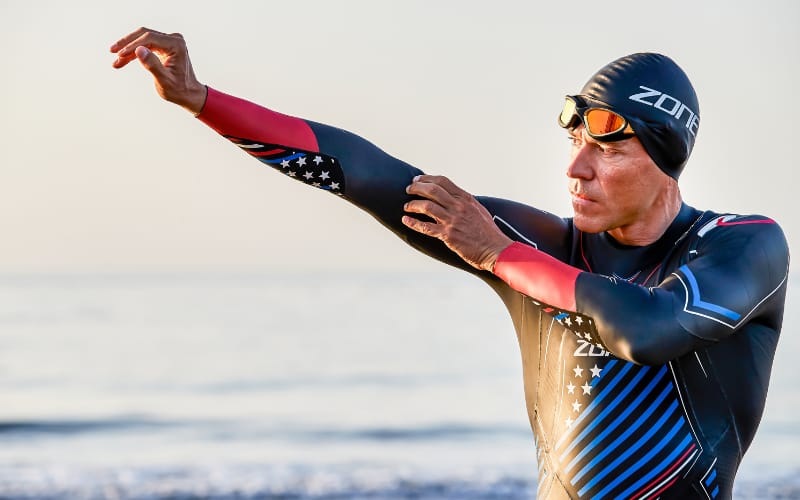
Sleeved or Sleeveless? Selecting the Suit for Success!
by Zone3

When it comes to choosing a wetsuit for triathlon, one of the key decisions you'll need to make is whether to go for a full-sleeved or sleeveless option. Each type of wetsuit has its pros and cons, and understanding the differences between them can help you make an informed choice based on your personal preferences and needs.
Sleeved Wetsuits
Sleeved wetsuits, as the name suggests, have sleeves that extend all the way down to the wrists. These wetsuits are designed to provide more coverage and protection than sleeveless options, particularly in cooler water conditions.
- Warmth: One of the biggest advantages of a sleeved wetsuit is its ability to keep you warm. The extra material covering your arms helps to trap heat close to your body, supporting blood flow and maintaining temperature at the extremities.
- Protection: The sleeves also provide a layer of protection against chafing, particularly around the armpit area where the wetsuit might rub against your skin.
- Buoyancy: Another benefit of a sleeved wetsuit is the added buoyancy it provides. The extra neoprene material around your arms and shoulders helps to keep you afloat, which can be particularly helpful if you struggle with your swim technique or if you're competing in choppy waters.
However, there are some potential drawbacks to consider with sleeved wetsuits. The extra material can sometimes feel a little more restrictive compared to a sleeveless suit. Some athletes can also find the added warmth uncomfortable in warmer water conditions an may want to consider the sleeveless option.
Sleeveless Wetsuits
Sleeveless wetsuits, on the other hand, are designed to provide maximum freedom of movement and breathability throughout the shoulders. Without the sleeves, you have full range of motion in your arms, which can help you swim with greater comfort and mobility.
- Mobility: Sleeveless wetsuits are typically lighter and less restrictive than a sleeved option. This can be particularly beneficial if you're competing in warmer water conditions or if you're looking for additional comfort over longer distances.
- Faster transitions: Sleeveless wetsuits can be easier to remove quickly during transitions, allowing athletes to save valuable time in the race.
However, one of the potential downsides of a sleeveless wetsuit is that it provides less coverage and protection than a sleeved option. You may be more susceptible to sunburn on your arms, the lack of material can make you feel less buoyant in the water and your hands may get colder quicker.
Choosing the Right Wetsuit for You
Ultimately, the decision between a sleeved and sleeveless wetsuit comes down to your personal preferences and needs. If you're competing in colder water conditions or looking for maximum coverage and buoyancy, a sleeved wetsuit may be the best option for you. On the other hand, if you prioritize freedom of movement and breathability, a sleeveless wetsuit may be the better choice.
Whichever option you choose, make sure to try on a few different wetsuits before making your final decision. Look for a wetsuit that fits snugly but comfortably and allows for a full range of motion in your arms and shoulders. With the right wetsuit, you'll be able to swim comfortably and confidently through any triathlon course.